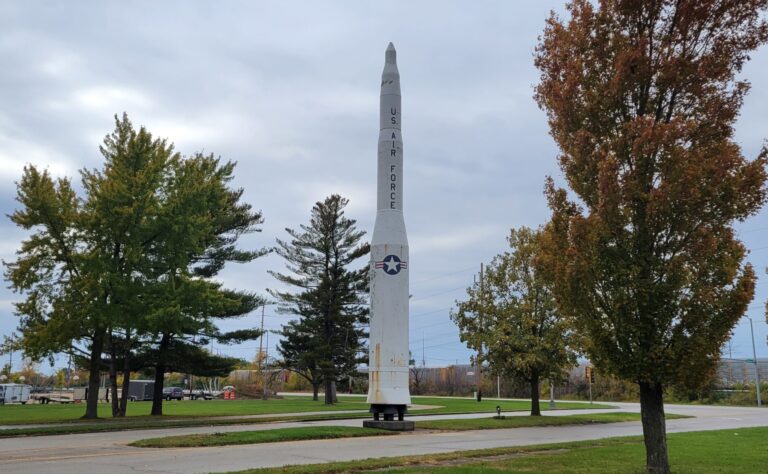RANTOUL – A ceremony in Rantoul on Wednesday marked the completion of the transfer of Air Force land that had once been Chanute Air Force base.
From 1917 to its closure 30 years ago, the base hosted military aircraft from World War One to the Vietnam War, and training programs for more than one million airmen. Those include early members of what would become the Tuskegee Airmen, the nation’s first African American Air Force pilots.
Colonel Kathyn Kilker with the Air Force Civil Engineer Center in Texas spoke at the afternoon ceremony, which brought a crowd to the Rantoul village boardroom.
Kilker praised the relationship over the years between base personnel and Rantoul residents.

“As anyone who was assigned to Chanute Air Force Base can attest, the Rantoul community has always treated the Air Force as a family,” Kilker said. “And we are grateful for more than 100 years of hospitality, support, partnership and friendship.”
Rantoul’s village president, Chuck Smith, will vouch for the family atmosphere. Smith served in the Air Force at the Chanute base during the 1960s, leaving in 1969 to attend college, and making Rantoul his home.
“It was the best experience that a young man, who left western North Carolina, could have, to come to a community that was so open, welcoming”, says Smith.
The transfer of the last parcel of Air Force land at the former Chanute site was approved by the Rantoul Village Board at its September 12 village board meeting. It will become part of the Illinois Center for Transportation, a new University of Illinois facility in Rantoul for testing self-driving vehicles.
Other parts of the 2,200-acre Chanute site have been converted to public and private use. Its airstrips have become a public airport. Homes that once housed base personnel now house village residents. Former military buildings house private businesses and the Rantoul Public Library. The base’s golf course is now the privately-owned Willow Pond Golf Course, open to the public.
But Rantoul village president Chuck Smith says that approximately 480 acres of Chanute land are currently unused.
Rantoul’s population grew sharply during and after World War II, from 2,367 in the 1940 Census to a peak of 25,562 in 1970. But it fell by double digits in later Census counts, including a 25.3% drop in the 2000 Census after the base closed. According to the 2020 Census, 12,371 people in Rantoul, less than half of its 1970 population. But Smith says the town is coming back, with new developments both on and off the former Chanute base.
“The transition’s been slow, it’s been painful,” says Smith of life in Rantoul since the Chanute base closed, “but it’s been very, very progressive.”
Environmental concerns linger
The final transfer of Chanute property doesn’t end the military’s presence in Rantoul. The Air Force will still be involved in the cleanup of environmental hazards on the base site.
Paul Carroll is an environmental coordinator with the Air Force Civil Engineer Center. He says that while most of the environmental cleanup at the Chanute site has been completed, “there are new and emerging contaminants, so we still are going to be around to investigate and manage as necessary, going into the future.”
Carroll says the Air Force is looking for signs of PFAS and 1,4-dioxane at the sites. He says these chemicals pose health risks that were little understood when the base was open. Eight sites will be investigated over the next three years.
While Rantoul looks to a future beyond Chanute, one piece of Air Force property remains in the village. It is a Minuteman II intercontinental ballistic missile, standing along U.S. Route 45 at what was once the Air Force base’s West Gate.
Currently, the 60-foot-tall missile (or technically, the shell of one, anchored in concrete) is on loan from the National Museum of the U.S. Air Force in Ohio. Village President Smith says the village is working with the museum to determine if keeping the slowly deteriorating missile shell on display in Rantoul is feasible.

